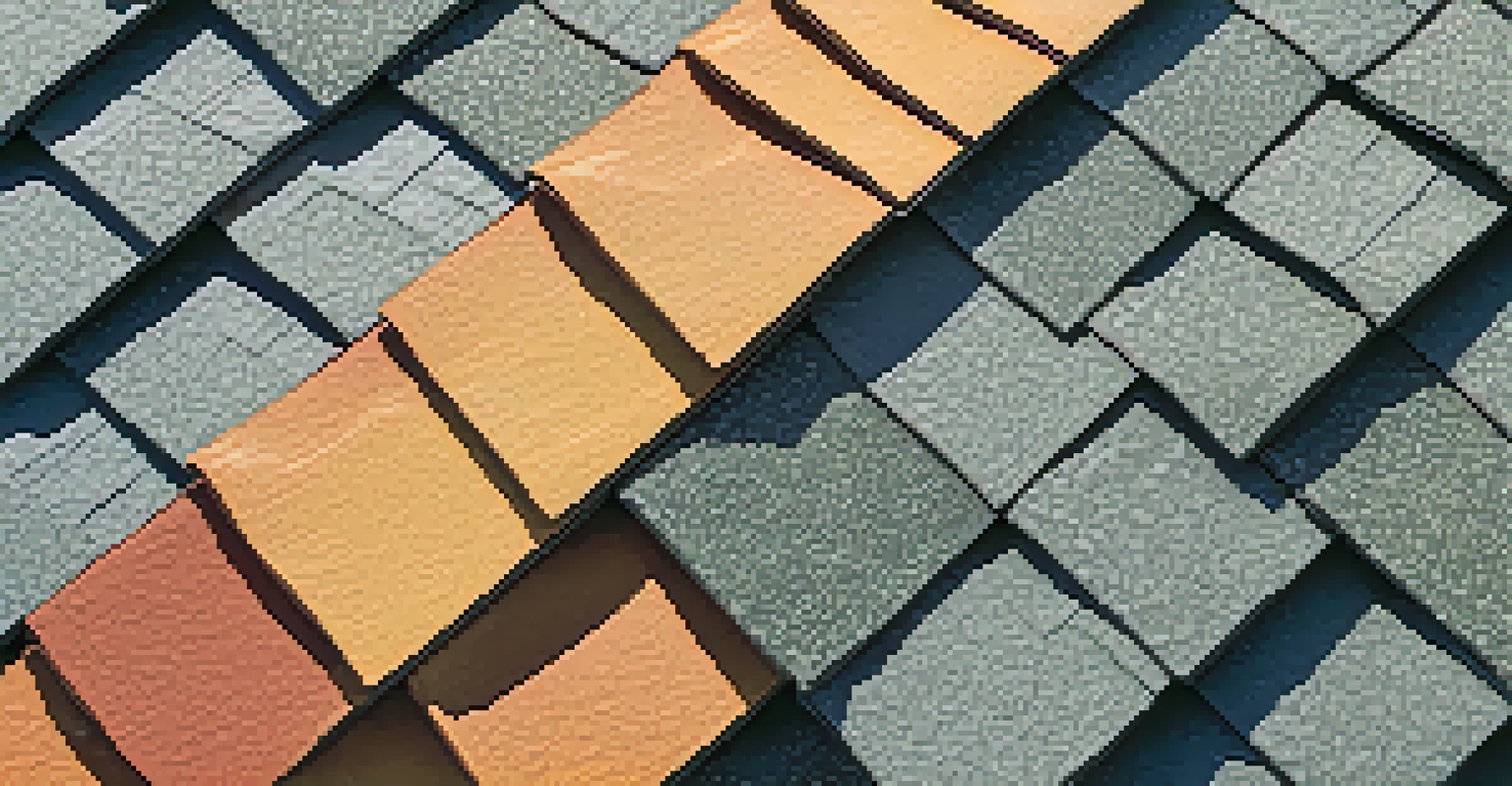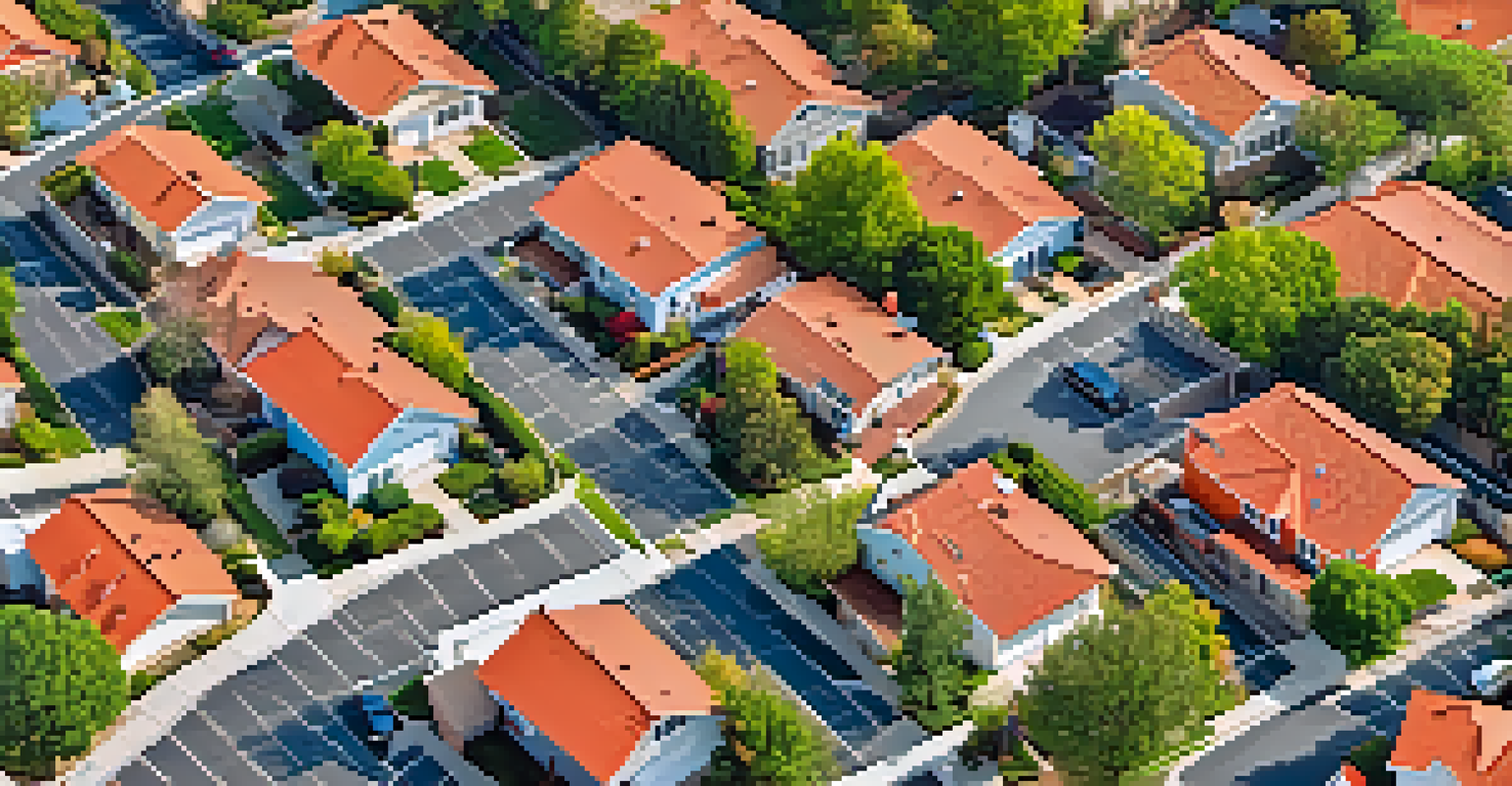How to Choose Energy-Efficient Roof Materials for Homes

Understanding Energy-Efficient Roofing Materials
Energy-efficient roofing materials are designed to reflect more sunlight and absorb less heat. This can help maintain a comfortable indoor temperature, reducing reliance on air conditioning. By selecting the right materials, homeowners can save on energy bills and lower their carbon footprint.
The roof is the most important part of a house, for it protects everything beneath it.
These materials often come in a variety of styles and colors, allowing you to choose options that complement your home's aesthetic. From reflective shingles to cool metal roofs, there are choices to fit every design preference. Understanding these options is the first step in your roofing journey.
In addition to energy savings, many energy-efficient roofing materials are durable and long-lasting. This means that while the initial investment might be higher, the long-term benefits can outweigh the costs. A smart choice today can lead to significant savings in the future.
Evaluating Your Home's Climate and Environment
Before choosing roofing materials, consider your local climate. Different materials perform better under varying weather conditions. For instance, if you live in a hot area, reflective materials can significantly reduce heat absorption.

In colder climates, materials that provide good insulation can help keep your home warm. Understanding your environment can guide you to the best choices for efficiency and comfort. Think of your roof as a shield that adapts to its surroundings.
Choose Materials for Your Climate
Selecting roofing materials that suit your local climate can significantly enhance energy efficiency and comfort.
Additionally, consider factors like rainfall and snow load in your area. Some materials handle these elements better than others, contributing to their overall energy efficiency. Choosing the right material based on your climate can enhance the durability and performance of your roof.
Exploring Different Types of Energy-Efficient Materials
There are several types of energy-efficient roofing materials available, each with unique benefits. For example, asphalt shingles can be treated with reflective coatings to enhance their energy efficiency. Similarly, metal roofs are inherently reflective and often come with high energy-saving ratings.
Energy efficiency is not just a trend; it’s a way of life that saves money and preserves the environment.
Another option is clay and concrete tiles, which not only reflect sunlight but also offer excellent insulation. Green roofs, which involve planting vegetation on the roof, provide natural insulation and reduce heat absorption. Each material has its pros and cons that cater to various preferences and budgets.
When exploring options, it’s essential to weigh the initial costs against the potential savings on energy bills. Some materials may require a higher upfront investment but can lead to lower long-term costs. Make sure to research and consult with professionals to find the best fit for your home.
Considering Aesthetic Appeal and Home Value
While energy efficiency is vital, the appearance of your roof can significantly impact your home's curb appeal. Many energy-efficient materials come in a range of styles and colors, allowing you to find something that suits your taste. A beautiful roof can enhance your home's overall aesthetic and increase its market value.
Think of your roof as the crown of your home; it should not only function well but also look great. For instance, a sleek metal roof can provide a modern touch, while classic shingles can deliver a traditional feel. Balancing energy efficiency with aesthetic appeal is key to making a well-rounded choice.
Balance Aesthetics and Efficiency
While energy-efficient roofing is crucial, it’s equally important to choose materials that enhance your home’s curb appeal.
Investing in an appealing roof can also attract potential buyers should you decide to sell your home in the future. High-quality, energy-efficient roofing materials can be a selling point, emphasizing lower energy costs and a more sustainable lifestyle. Consider how your choices today can impact your home's value tomorrow.
Researching Local Building Codes and Regulations
Before making any decisions, it's crucial to check local building codes and regulations regarding roofing materials. These codes can vary widely by location and may dictate specific requirements for energy efficiency. Understanding these regulations can help ensure your new roof meets legal standards.
In some areas, there may be incentives or rebates available for using energy-efficient materials, which can further reduce your overall costs. Familiarizing yourself with these options can add significant value to your investment. It's like finding hidden treasure in your backyard!
Furthermore, working with a contractor who understands local codes can save you time and headaches. They can guide you through the process and help you select materials that meet or exceed regulations, ensuring a smooth installation process. This proactive approach can prevent future issues down the line.
Consulting with Roofing Professionals
Navigating the world of roofing materials can be overwhelming, which is why consulting with professionals is essential. Experienced roofing contractors can provide valuable insights into the best materials for your specific situation. Their knowledge can help you make informed choices that prioritize energy efficiency and durability.
Additionally, professionals can offer recommendations based on their past projects and customer feedback. They may have insights into local trends and preferences that can guide your decision-making. Think of them as your trusted advisors in the roofing journey.
Consult Professionals for Guidance
Working with experienced roofing contractors can help you navigate material options and ensure proper installation for optimal energy efficiency.
Finally, a professional can help ensure that your chosen materials are installed correctly, maximizing their energy-efficient benefits. Proper installation can be just as important as the materials themselves, so don’t overlook this step. Investing in expert advice can lead to long-term satisfaction with your roofing choice.
Budgeting for Energy-Efficient Roofing Solutions
When considering energy-efficient roofing materials, budgeting is a crucial step. While some materials may have a higher initial cost, they often lead to savings in energy bills over time. It's important to assess your budget and consider the long-term financial benefits of investing in quality materials.
Additionally, factor in the costs of installation and maintenance when creating your budget. Some materials may require more upkeep, while others offer durability with minimal maintenance. Understanding these costs can help you make a more informed decision.

Finally, consider potential financing options or incentives that may be available for energy-efficient home upgrades. Many utility companies offer rebates for energy-saving improvements, which can help offset initial costs. By planning ahead, you can find a solution that fits your financial situation while enhancing your home's energy efficiency.